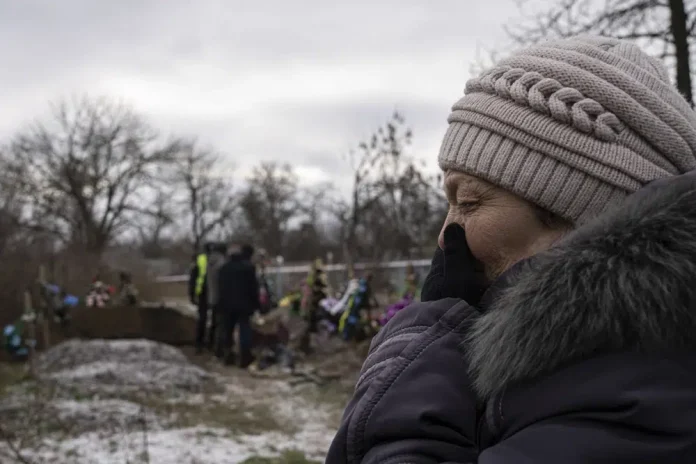KHERSON, UKRAINE (AP) December,11– A grenade pierced the detergent drawer of a home washing machine in Kherson. A road sign that maliciously directs passersby into a dangerous minefield. A police station rumoured to house a torture chamber, but with booby traps and a mine clearance crew unable to even look for evidence.
Sunday marked exactly one month since Russian troops withdrew from Kherson and his surrounding areas after eight months of occupation, cheering across Ukraine. But life in Südstadt is still far from normal. The retreating Russians have left all kinds of ugly raids in their wake, and their artillery continues to bombard the city from new trenches on the Dnieper. The local administration said on Saturday that 41 people, including children, were killed and 96 hospitalized in the last month’s shelling in Kherson.
Residents’ access to electricity continues to come and go, but water is mostly connected and room heating was only recently restored in only about 70-80% of the city. I was in charge of most of the city.
For authorities and citizens, it is a daily task to sift through the myriad headaches and dangers left behind by the Russians and prepare for the new.
Local authorities say about 80% of Kherson’s pre-war population of about 320,000 fled after the Russian invasion, days after the invasion began on 24 February. 24. Approximately 60,000 to 70,000 residents remain, giving the city a ghost town feel. Most people stay indoors and are wary of intrusions on the streets.
Usually a term relative to a country at war. I don’t know if what Russia calls “military special operations” will end in days, weeks, months or even years. Meanwhile, meticulous efforts are being made to bring a better sense of everyday life, including clearing the mess and landmines left behind by the Russians during the harsh winter weather.
Deploying additional teams could ease the heavy workload, he said. “For reference, in a month of our work he found and removed several tons of landmines,” Technik said, adding that they were about 10 square kilometres (about 4 square kilometres). Miles) only.
In the Belislavsky district of Kherson, the main road was closed with a sign reading “mines ahead” and pedestrians were diverted to smaller roads. In fact, it was on this side street that mines were mined and the lives of military mine clearers were taken. A few weeks later, four police officers were also killed there, including the police chief of the northern city of Chernihiv, who had come down to rebuild Kherson.
The general condition of the weather-beaten roads helped the outgoing Russians camouflage the deadly traps.
Earth-covered potholes were convenient places to lay mines. Sometimes the Russians themselves made cuts and holes in the asphalt.
The crew finds the washing machine in the house stuffed with grenades. The pin was positioned so that it would explode when the detergent container was opened.
The city’s main police station, where detainees were reportedly tortured, is packed with explosives. The project was put on hold for the time being when part of the building exploded when a demining party tried to break in.
Kherson is located in an agricultural area that produces diverse crops such as wheat, tomatoes and watermelons, which are the symbols of the region. Fields are mined so frequently that about 30% of the arable land in the region is probably not planted in the spring, according to Technik.






